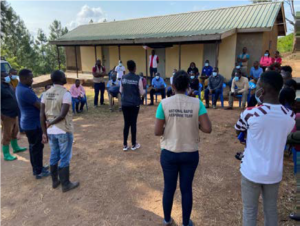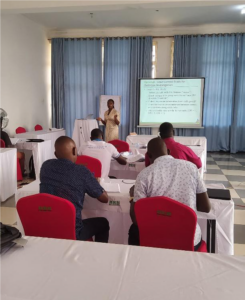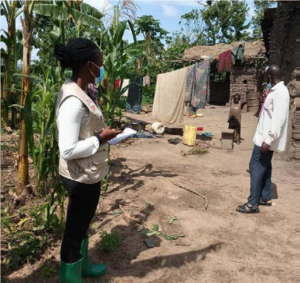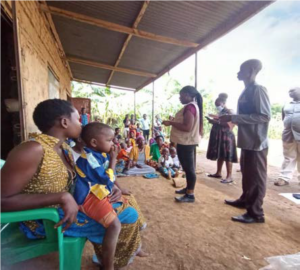 |
Jane Frances ZalwangoB. Pharm (MUK), MSc CEB (MUK), & Advanced Field Epidemiology Fellow (UPHFP) Host Site: Ministry of Health, National Malaria Control Division (NMCD)
|
|||||
ABOUT THE FELLOWJane Frances Zalwango is a pharmacist passionate about understanding population disease dynamics and improving population safety, with a special focus on maternal and child health. She holds a Masters of Science in Clinical Epidemiology and Biostatistics and now the field epidemiology training program. Throughout this journey, she has made significant contributions to improving population safety through response to outbreaks, surveillance activities, and impactful research initiatives. Before the fellowship, she worked with the World Health Organization as an epidemiologist during the COVID-19 response. During the fellowship program, Jane was attached to the National Malaria Control Division (NMCD), Uganda Ministry of Health whose mandate is to provide quality assured services for malaria prevention and treatment to all people In Uganda. While at NMCD, she monitored and evaluated malaria indicators and led the editing of the weekly malaria bulletin. As a fellow, Jane led and participated in a number of outbreaks and projects including the 2022 Sudan Virus disease outbreak, evaluating surveillance systems, conducting operational research for program improvements, conducting root cause analyses, and implementing quality improvement projects among others. From this experience, she has improved her skills in outbreak detection and response, scientific writing, grant writing and management, and oral presentation. Aditionally, she has developed leadership skills over the last two years. Routine surveillance data analysis sharpened her skills in using electronic data collection tools such as ODK and Kobo Collect, statistical software such as STATA, EpiInfo, and QGIS. Achievements at the Host Site
Fellowship program specific achievements
Summary of Epidemiological Study:Title: Understanding the delay in identifying Ebola Virus Disease: gaps in integrated disease surveillance and response and community based surveillance to detect viral hemorrhagic fever outbreaks in Uganda, September 2022 Background: Early detection of outbreaks requires robust surveillance and reporting at both community and health facility levels. Uganda implements Integrated Disease Surveillance and Response (IDSR) for priority diseases and uses the national District Health Information System (DHIS2) for reporting. However, investigations after the first case in the 2022 Uganda Sudan virus outbreak was confirmed on September 20, 2022 revealed many community deaths among persons with Ebola-like symptoms as far back as July. Most had sought care at private facilities. We explored possible gaps in surveillance that may have resulted in late detection of the Sudan virus disease (SVD) outbreak in Uganda. Methods: Using a standardized tool, we evaluated core surveillance capacities at public and private health facilities at the hospital level and below in three sub-counties reporting the earliest SVD cases in the outbreak. Key informant interviews (KIIs) were conducted with 12 purposively-selected participants from the district local government. Focus group discussions (FGDs) were conducted with community members from six villages where early probable SVD cases were identified. KIIs and FGDs focused on experiences with SVD and Viral Hemorrhagic Fever (VHF) surveillance in the district. Thematic data analysis was used for qualitative data. Results: Forty-six (85%) of 54 health facilities surveyed were privately-owned, among which 42 (91%) did not report to DHIS2 and 39 (85%) had no health worker trained on IDSR; both metrics were 100% in the eight public facilities. Weak community-based surveillance, poor private facility engagement, low suspicion index for VHF among health workers, inability of facilities to analyze and utilize surveillance data, lack of knowledge about to whom to report, funding constraints for surveillance activities, lack of IDSR training, and lack of all-cause mortality surveillance were identified as gaps potentially contributing to delayed outbreak detection. Conclusion: Both systemic and knowledge-related gaps in IDSR surveillance in SVD-affected districts contributed to the delayed detection of the 2022 Uganda SVD outbreak. Targeted interventions to address these gaps in both public and private facilities across Uganda could help avert similar situations in the future. Key lessons learnt during the fellowship
|
||||||
|
|

|
 Ebola outbreak in Kassanda District, 2022
|
|
|
|



